Traversing a Corner of Southeast China in Nine Days
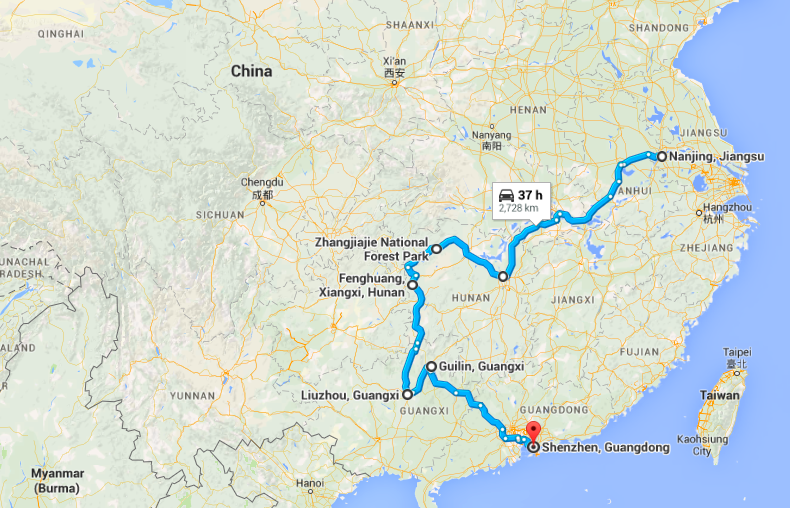
We had nine days to get to Hong Kong to fly home, and an itch to see more of China, so we mapped out our path to get maximum bang for our buck, winding our way from Nanjing to Zhangjiajie, to Phoenix town and finally Guilin before returning home .
Traveling around Southeast China was not only a way to satisfy my wanderlust, but also a way for me to brush up on some language skills. I went during the winter to avoid the 人山人海 (renshanrenhai…basically a huge crowd ) that flock to these destinations during National holidays and the summer months and clog up China’s unspoiled beauty.
Traveling in China is very easy, even with limited language skill. Rail and bus transport is extensively developed throughout China, enabling people to reach more remote areas of the country. Moreover, this region is incredibly affordable! We embarked on a whirlwind trip for nine days with only the backpacks on our backs, and travel, food, and accommodation for our entire trip came out to about $400 USD.
For all those with an appetite for exploration, I hope this article gives you a gentle prod to get out and see all this beautiful country has to offer. There is more to China than Beijing and Shanghai, the Great Wall or the Terracotta Warriors; there are sights to see, places to explore, and cities to get lost in.
Below are the four highlights of the trip, and a little taste of what China has to offer if you step just outside the city grind!
First Stop: Nanjing (南京)
Nanjing, with translates to “Southern Capital” has been the political capital of China a few times throughout history, including the Ming Dynasty as well as the days of the Republic of China. The city, which borders the Yangtze River, is a popular place to visit on combined trips with the nearby Shanghai, Suzhou, and Hangzhou.
1. Confucius Temple (夫子庙 Fu Zi Miao)

Originally constructed in 1034, the temple was built to commemorate China’s greatest philosopher and teacher, Confucius. Adjacent to the temple is the Jiangnan Examination School, which scholars in the region came from across China to take the imperial examination. Even in contemporary society, many exam takers (or rather their parents), whether it be the civil service exam or the gaokao, will go to the temple to wish for good results. During the day, you can go into the complex and see the numerous marble statues, art exhibitions and the famous jade panels, depicting the sage’s life.
2. Qin Huai River (秦淮河 Qin Huai He)
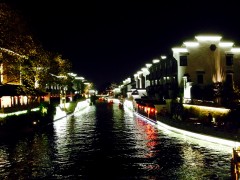
The river runs right in front of the Confucius Temple. During the night time, it is lit up by red lanterns that line the riverbank, rooftops and river boats. On either side of the river are multitudes of clothing shops, restaurants, cafes and souvenir shops with both major brand names and more traditional, handmade items. The night market is a great place to go if you want to shop, eat street food, people watch, or enjoy a stroll.
3. Xiaoling Mausoleum of Ming Dynasty (明孝陵 Ming Xiao Ling), Dr. Sun Yat-Sen’s Mausoleum(中山陵 Zhong Shan Ling) & Linggu Temple (灵谷寺 Ling Gu Si)


This trio of attractions is nestled at the foot of Purple Mountain in northeastern Nanjing, and for a small fee, you can take a shuttle between them. The natural beauty and history to be found at these attractions offers quite the bang for your buck!
The Xiaoling Mausoleum is one of the largest tomb sites in Chinese history (but even if you’re not a history buff, the park is very well kept with many tree-lined paths that extend from the main attractions). Though most of the leaves had fallen off the trees when I went in early December, the sky was so clear and we could see the surrounding forest and mountainside with the leaves of the trees in vibrant fall colors.
I also highly recommend climbing the spiral staircase to the top of the Linggu temple for an absolutely stunning view of the city!
Second Stop: Zhangjiajie National Park (张家界国际森林公园 Zhangjiajie Guo Ji Sen Lin Gong Yuan)
1. Yangjiajie (杨家界)

This park is not to be underestimated. The manager at the hotel told us sometimes travelers spend weeks in the park, though most people don’t have the time. We had only budgeted two days, so he told us Yangjiajie, a subsection of the Wulingyuan area, would be a great option with many different trailheads, and cable cars to help us get around. Yangjiajie is normally one of the more popular areas, but it wasn’t crowded at all because it was winter. With the crisp mountain air and low hanging clouds, it is no surprise that this scenery was the inspiration for the floating islands in the 2009 film, Avatar.
2. Golden Whip Stream (金鞭溪 Jin Bian Xi)
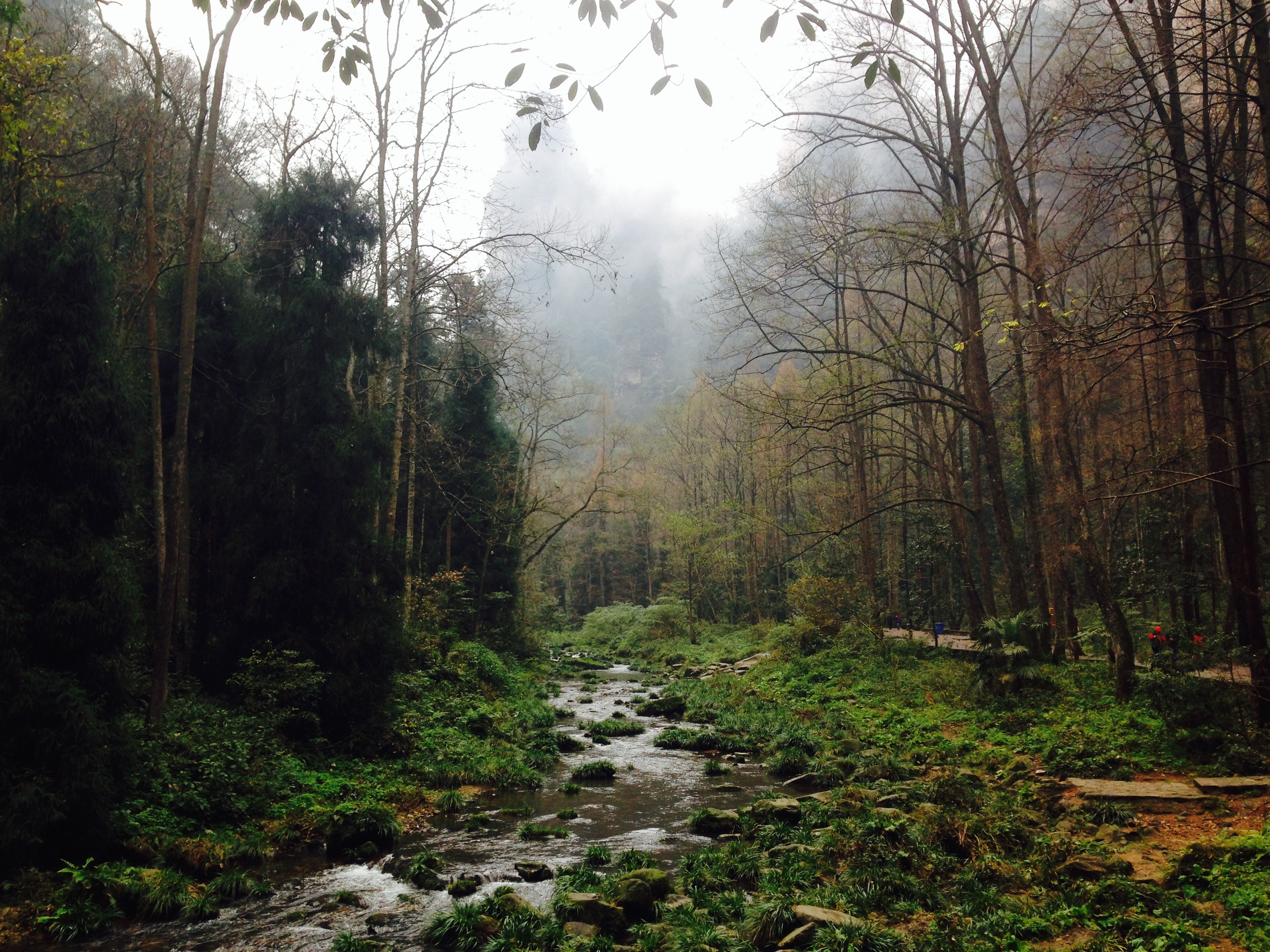
In the winter this hike is often overlooked because the trail begins just off of the base camp area of the park. Many visitors want to look at the stoic, karst peaks from above– but the Golden Whip Stream hike offers another perspective of the peaks from the ground. The unique landscape and the way the stream winds around bends in the earth offers a gorgeous backdrop to the 6 km hike. There are also many birds and monkeys in the less frequented areas.
Third Stop: Phoenix Ancient Town (凤凰城 Feng Huang Cheng)
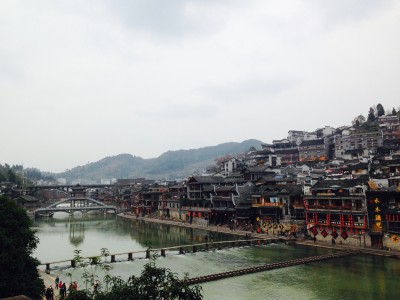
Named after the mythical bird, Phoenix Ancient Town is a serene walled village nestled in the mountains of western Hunan that many tourists, Chinese and non-Chinese alike do not know about. It has seemingly remained frozen in time: the streets are cobblestone, the neighborhoods are elegantly designed mazes and the local inhabitants, the Miao and Tujia people, still don their traditional clothing. The village is a great place to go to escape from city life. This is a day trip definitely worth taking if you’re in the area.
Fourth Stop: Guilin (桂林)
1. Li River Boat Cruise

This is an absolute must-see. The lush, green hills are scattered throughout the plain that the iconic Li river weaves through. Without a doubt, the scenes from the popular Li river boat tour are among the most stunning sights in China. These tours last anywhere from 1-5 hours and buses leave regularly from many drop-off points, allowing great flexibility for travelers. If you have more time, there are many villages that line the banks you can stop at for picturesque views and hidden trails that lead to views of rice terraces and other verdant scenes.
2. Yangshuo (阳朔)
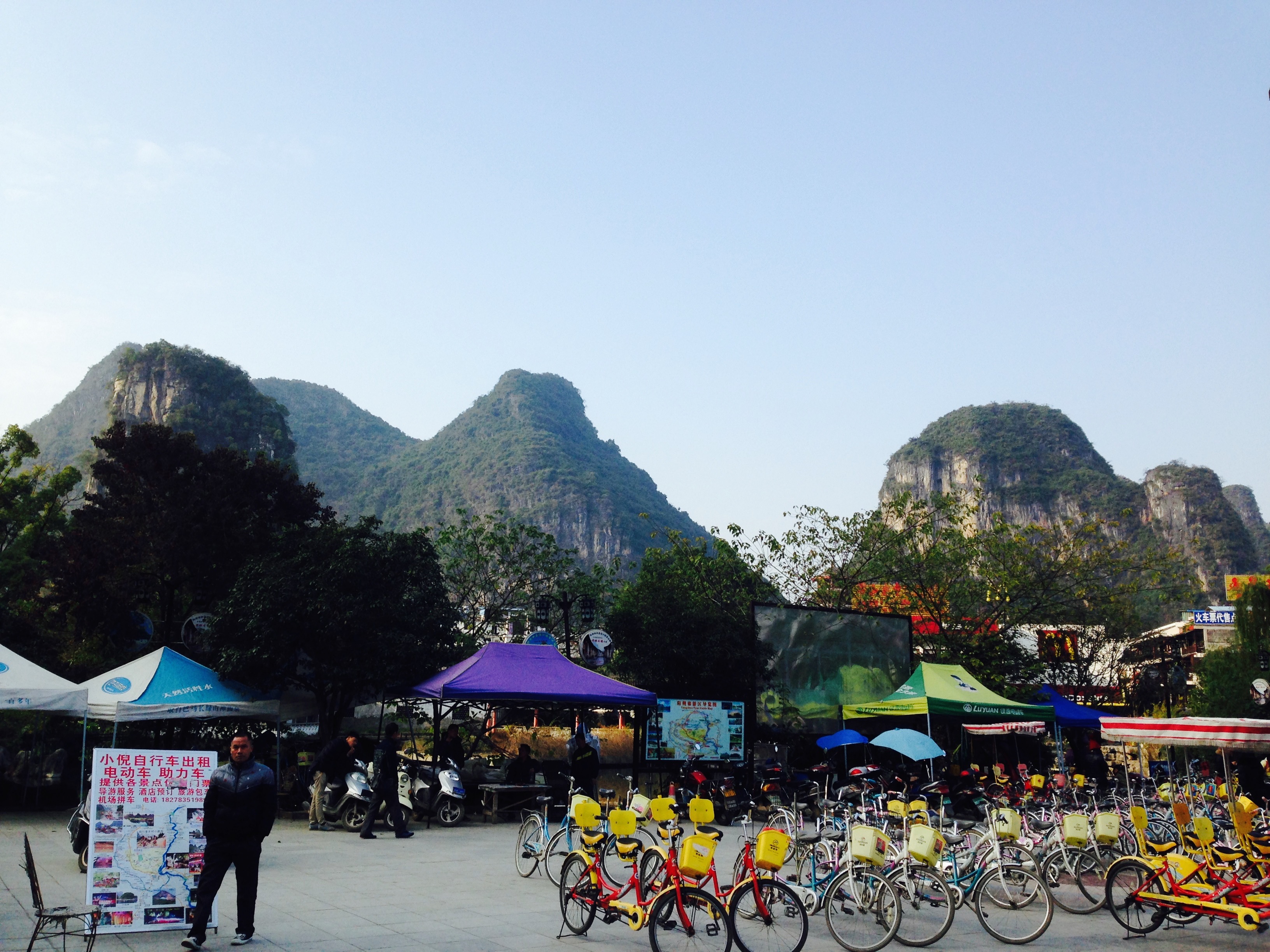
Yangshuo is a popular destination amongst tourists who visit Guangxi and has very famous bicycle tours in the surrounding mountains. We decided to stay and walk around West Street (西街 Xi Jie), which has become a popular tourist area with plenty of opportunities to buy souvenirs and taste various foods. We even spotted a few traditional German restaurants due to the relatively large ex-pat community that has settled in the town.
3. Elephant Trunk Hill (象鼻山 Xiang Bi Shan)
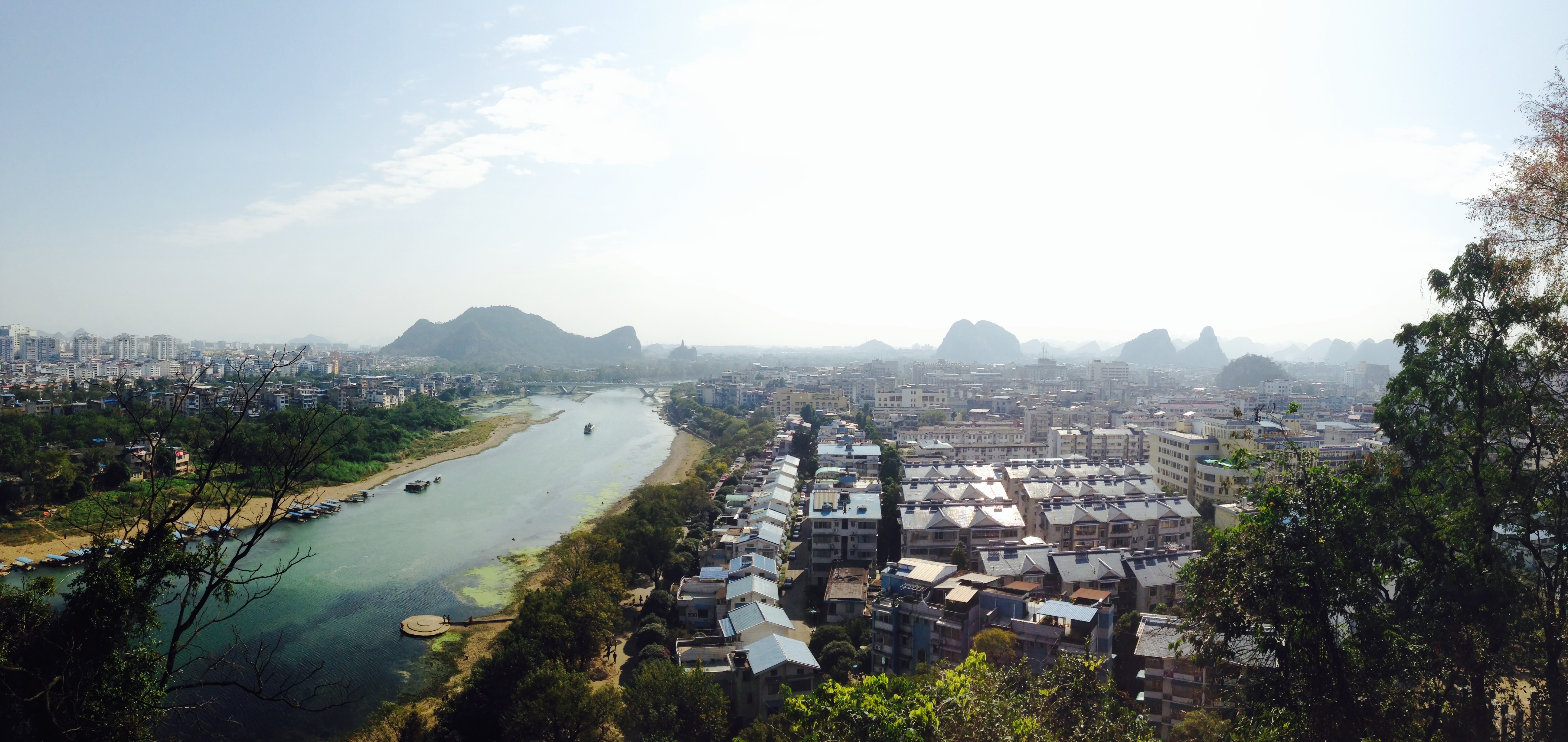
From the river, the hill looks like an elephant drinking water. It is located at the junction of the Li River and the Peach Blossom River. Although this park is frequented by tourists and locals alike, most are unaware this attraction is the symbol of Guilin. You can climb to the top of the hill and get a panoramic view of the city, and if it is clear enough you can see the famous Yangshuo mountains in the backdrop.
4. Reed Flute Caves (芦笛岩 Lu Di Yan)

Recently rediscovered in the 1940s, the cave was named after the reeds that grow at the mouth of the cave that can be made into flutes. There are many different types of rock formations inside, many with their own stories. The cave has been filled with colored light to help visitors gain a sense of depth, height and detail. There are also paths leading up to a hill next to the cave with breathtaking views of the city, which is scattered throughout the hilly landscape.
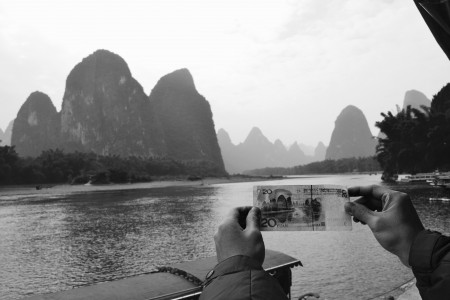
Homeward Bound
From Guilin, we took an overnight train to Shenzhen and crossed the border into Hong Kong the next morning. Nine days was the perfect amount of time to backpack in the region, although I know I could have stayed longer. My insatiable appetite for adventure was quite satisfied; I’ll always remember wandering the Zhangjiajie mountain paths in the cool, eerie fog, and cruising down the Li River on a bamboo boat watching farmers tending their fields. For me at least, I know I’m immersed in the beauty of the place I’m in when I lose track of the date and time. I knew of my impending departure, but my flight home was not a goodbye; rather it was a see you later, a sign I would be back again to explore.
If you are looking for other travel ideas in China, be sure to check out our post from last summer: Unspoiled China: 5 Destinations that Most Travelers Miss.
Any places you’ve been to in the region that I haven’t mentioned? Comment down below!